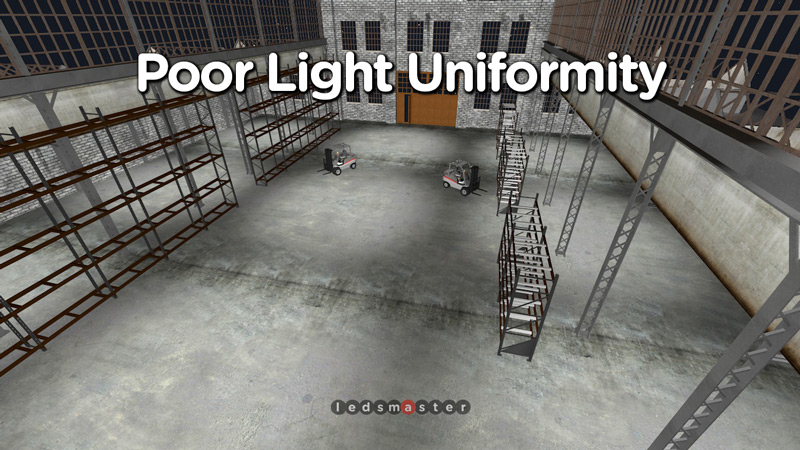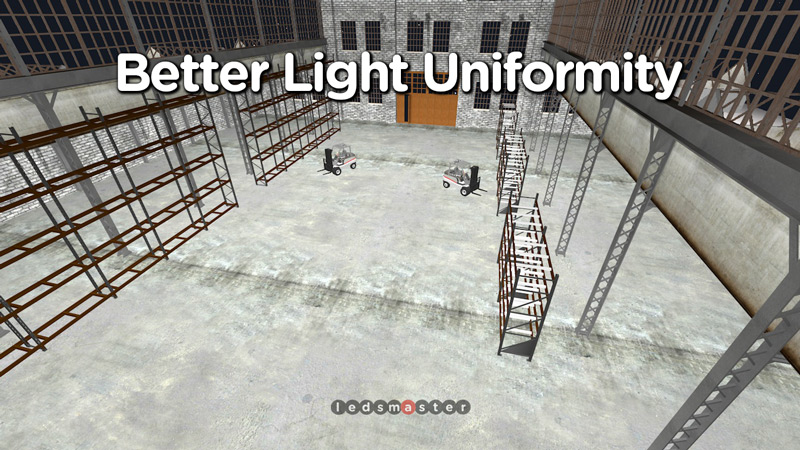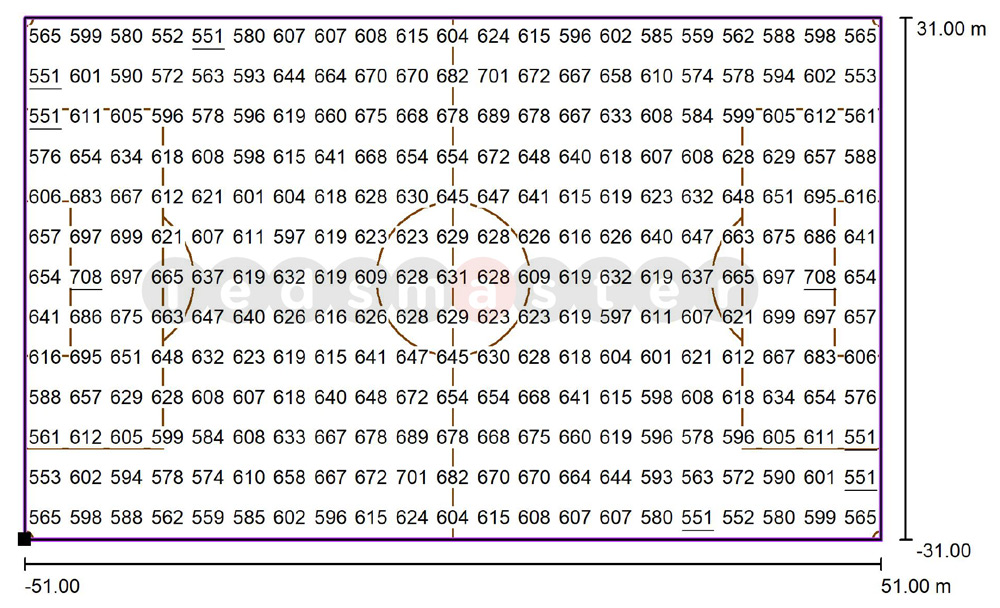When illuminating spaces such as commercial parking lots, industrial areas like factories, or stadiums, achieving consistent lighting uniformity is crucial to enhance user experience.
While ensuring sufficient brightness (lux level) is essential, many overlook the importance of measuring and calculating the uniformity ratio of light distribution. Insufficient uniformity in outdoor or indoor lighting can lead to discomfort among citizens, workers, or athletes, adversely affecting their vision and overall experience.
Table of Contents
ToggleWhat is Lighting Uniformity
Definition & U1 U2 Light Uniformity Equation
Measuring brightness in lux levels with a lux meter provides specific figures for a defined area. However, measuring uniformity is more complex and requires multiple measurements. Lighting uniformity is defined as the ratio between minimum to average lux or minimum to maximum lux. Lux measures illuminance, indicating actual brightness on a surface.
In general, the lighting uniformity equations governing U1, U2 & illuminance (lux) are
U1 = EMin ÷ EAverage
U2 = EMin ÷ EMaximum
Here, U and E represent uniformity and illuminance respectively.
These formulas illustrate that U1 and U2 describe how evenly light is distributed based on illuminance levels. A higher ratio indicates better uniformity, implying minimal differences between minimum and average lux levels, resulting in more evenly distributed lighting.
Poor Vs Good Light Uniformity
 |
 |
Let’s have a quick look on the meaning of good lighting uniformity. In the warehouse photos on the left-hand side, noticeable bright spots and dim areas indicate uneven lighting distribution. Such unevenness can obscure visibility for workers in darker regions, potentially increasing the risk of accidents.
Conversely, areas with good lighting uniformity ensure even illumination across the entire floor. This uniformity is achieved when ceiling flood lights distribute light in various directions, minimizing shadows and creating a well-lit environment.
Recent research highlights that high lighting uniformity not only enhances worker productivity and safety but also improves the viewing experience for spectators at sports stadium events.
For a complimentary lighting design consultation focused on achieving superior uniformity, feel free to reach out to us.
How to Calculate Lighting Uniformity
Let’s calculate the LED lighting uniformity in a real-world scenario using the DIALux illuminance chart for the football field.

here are the lux levels recorded at various sampling points on the chart.
| Value | Illuminance |
| Minimum | 551 lux |
| Average | 624 lux |
| Maximum | 708 lux |
Therefore, applying the formula, we calculate U1 as Minimum / Average lux = 551 / 624 = 0.88, and U2 as Minimum / Maximum lux = 551 / 708 = 0.78.
Maximum lighting uniformity is represented by a value of 1, indicating identical lux levels across all sampling points. Achieving this maximum value with artificial lighting is typically challenging.
Different Lighting Uniformity Standards
The lighting uniformity requirements vary depending on the natural characteristics and type of field. Using a football field as an example, it adheres to specific standards.
| Nature of Sports Field | Illuminance | U2 Light Uniformity Required |
| Class III (National Competition) | 700 to 1000 lux | ≥ 0.7 |
| Class II (Leagues) | 400 to 700 lux | ≥ 0.6 |
| Class I (Training Ball Field) | 200 to 400 lux | ≥ 0.5 |
The lighting uniformity standards are noted to elevate with the competitive level of the sports field. For football fields intended for training or recreational purposes, the uniformity and illuminance requirements are typically lower. In contrast, fields hosting national or televised matches necessitate more stringent lighting standards.
Commercial & Industrial Lighting Uniformity Requirements
| Area | Light Uniformity Standard |
| Airport | 0.2 to 0.3 |
| Running Track | 0.3 to 0.5 |
| Warehouse | 0.4 to 0.6 |
| Parking Lot | 0.4 to 0.5 |
| Office | 0.4 to 0.6 |
| Seaport | 0.3 to 0.4 |
| Highway | 0.4 to 0.6 |
In reality, high uniformity lighting is beneficial as it enhances visibility for workers or road users during nighttime. However, achieving such uniformity requires a more complex lighting system, which can increase the cost of luminaires.
Conclusion
Ensuring adequate lighting uniformity is essential across various settings, from sports fields to industrial and commercial spaces. While high uniformity improves visibility and safety, it often necessitates more sophisticated lighting systems, impacting cost considerations. Balancing these factors is key to achieving optimal lighting solutions tailored to specific needs and requirements.

